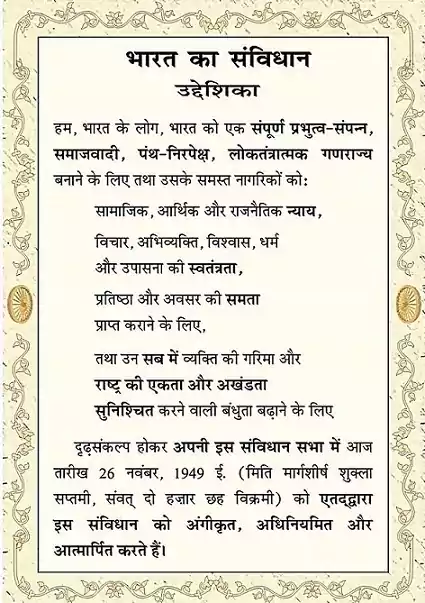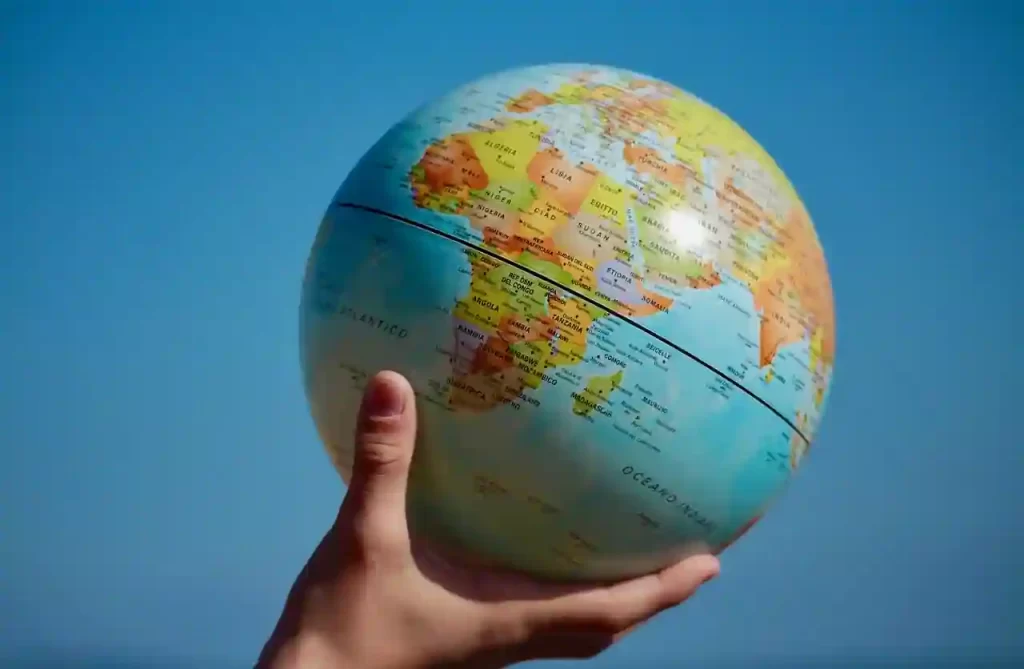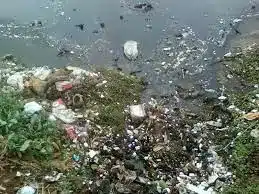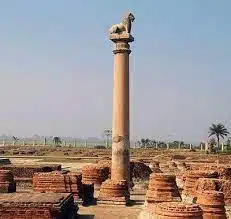Top 50 Indian Polity MCQs
1. In which schedule of the Indian Constitution, the territorial extent of Indian states and union Territories is prescribed?
(A) 1st
(B) 2nd
(C) 3rd
(D) 4th
Correct Answer: A (1st)
2. Functions of which of the following body in India are limited to advisory nature only?
(A) Legislative Council
(B) Rajya Sabha
(C) Lok Sabha
(D) Legislative Assembly
Correct Answer: A (Legislative Council)
3. In which case the Supreme Court for the first time limited the power of Parliament to amend the constitution for the first time?
(A) Minerva Mills Vs. The Union of India
(B) A.K. Gopalan Vs. The State of Madras
(C) Golaknath Vs. The State of Punjab
(D) Keshavananda Vs. The Union of India
Correct Answer: C (Golaknath Vs. The State of Punjab)
4. By which of the following amendment Sikkim was made a full-fledged State of the Indian Union?
(A) 30th
(B) 32nd
(C) 35th
(D) 36th
Correct Answer: D (36th)
5. Article 371-D contains special provisions with regard to which of the following states?
(A) Manipur
(B) Andhra Pradesh
(C) Tripura
(D) Maharashtra
Correct Answer: B (Andhra Pradesh)
6. Which of the following commission was appointed by the Central Government on Union-State relations in 1983?
(A) Sarkariya commission
(B) Dutt commission
(C) Setalvad commission
(D) Rajamannar commission
Correct Answer: (A) Sarkariya commission
7. Which of the article deals with the grants in aid by the Union government to the states?
(A) Article 270
(B) Article 280
(C) Article 275
(D) Article 265
Correct Answer: (C) Article 275
8. Which amendment of the Constitution of India increased the age of retirement of High Court judges from 60 to 62 years?
(A) 10th
(B) 15th
(C) 20th
(D) 25th
Correct Answer: (B) 15th
9. Who recognizes the political parties in India?
(A) President of India
(B) Election Commission of India
(C) Ministry of Law and Justice
(D) Speaker of the Lok Sabha
Correct Answer: (B) Election Commission of India
10. The Chairman of the Public Accounts Committee of Parliament is appointed by the
(A) Speaker of the Lok Sabha.
(B) Prime Minister of India.
(C) President of India.
(D) Chairman of the Rajya Sabha.
Correct Answer: (A) Speaker of the Lok Sabha.
11. Which Constitutional Amendment Act discontinued the Anglo-Indian reserved seats in the Parliament and State legislatures?
(A) 104th Amendment Act.
(B) 103rd Amendment Act.
(C) 102nd Amendment Act.
(D) 101st Amendment Act.
Correct Answer: (A) 104th Amendment Act.
12. The abolition of the I.A.S. and the I.P.S.has been recommended by the
(A) Dhebar Commission
(B) Kalekar Commission
(C) Kher Commission
(D) Rajamannar Commission
Correct Answer: (D) Rajamannar Commission
13. The only instance when the President of India exercised his power of veto related to
(A) the Hindu Code Bill
(B) the PEPSU Appropriation Bill
(C) the Indian Post Office (Amendment) Bill
(D) the Dowry Prohibition Bill
Correct Answer: (B) the PEPSU Appropriation Bill
14. The Swaran Singh Committee considered the question of
(A) more autonomy to Punjab on the model of Jammu and Kashmir
(B) the suitability of the Presidential form of government for India
(C) the precedence of the Directive Principles over Fundamental Rights
(D) administrative reforms
Correct Answer: (B) the suitability of the Presidential form of government for India
15. Which one of the following is a feature common to both the Indian Federation and the American Federation?
(A) A single citizenship
(B) Three lists in the Constitution
(C) Dual judiciary
(D) A federal supreme court to interpret the Constitution
Correct Answer: A federal supreme court to interpret the Constitution
16. Which one of the following is in the Concurrent List in the Constitution of India?
(A) Population control and family planning
(B) Public health and sanitation
(C) Capitation taxes
(D) Treasure trove
Correct Answer: (A) Population control and family planning
17. The Anti-Defection law was enacted as early as 1979 in
(A) Kerala
(B) Jammu and Kashmir
(C) West Bengal
(D) Tamil Nadu
Correct Answer: (C) West Bengal
18. Who among the following became the Prime Minister of India without being earlier the Chief Minister of a State?
(A) Morarji Desai
(B) Charan Singh
(C) V. P. Singh
(D) Chandrasekhar
(E) P. V. Narasimha Rao
Correct Answer: (D) Chandrasekhar
19. Which among the following taxes is/are levied by the Union and collected and appropriated by the States?
(A) Stamp Duties
(B) Passenger and goods tax
(C) Estate duty
(D) Taxes on Newspapers
Correct Answer: (A) Stamp Duties
20. Which one of the following determines that the Indian Constitution is federal?
(A) A written and rigid Constitution
(B) An independent Judiciary
(C) Vesting of residuary powers with the Centre
(D) Distribution of powers between the Centre and the States
Correct Answer: (D) Distribution of powers between the Centre and the States
21. The Dinesh Goswami Committee was concerned with
(A) de-nationalisation of banks
(B) electoral reforms
(C) the problem of the Chakmas
(D) None of the above
Correct Answer: (B) electoral reforms
22. Which one of the following is not explicitly stated in the Constitution of India but followed as a convention?
(A) The Finance Minister is to be a Member of the Lower House
(B) The Prime Minister has to resign if he loses the majority in the Lower House
(C) All the parts of India are to be represented in the Council of Ministers
(D) In the event of both the President and the Vice-President demitting office simultaneously before the end of their tenure the Speaker of the Lower House of the Parliament will officiate as the President.
Correct Answer: (B) The Prime Minister has to resign if he loses the majority in the Lower House
23. If in an election to a State Legislative Assembly the candidate who is declared elected loses his deposit, it means that
(A) the polling was very poor
(B) the election was for a multi-member constituency
(C) the elected candidate’s victory over his nearest rival was very marginal
(D) a very large number of candidates contested the election
Correct Answer: (D) a very large number of candidates contested the election
24. The power of the Supreme Court of India to decide disputes between the Centre and the States falls under its
(A) advisory jurisdiction
(B) appellate jurisdiction
(C) original jurisdiction
(D) constitutional jurisdiction
Correct Answer: (C) original jurisdiction
25. According to the Constitution of India, the term ‘District Judge’ shall not include
(A) chief presidency magistrate
(B) sessions judge
(C) tribunal judge
(D) None of the above
Correct Answer: (C) tribunal judge
26. Who was the first Chairman of the Backward Classes Commission?
(A) Jagjivan Ram
(B) Kaka Saheb Kalelkar
(C) B. D. Sharma
(D) B. R. Ambedkar
Correct Answer: (B) Kaka Saheb Kalelkar
27. In which one of the following years was Sarkariya Commission, which was empowered to recommend changes in Centre-State relations, submitted its report?
(A) 1983
(B) 1984
(C) 1985
(D) 1987
Correct Answer: (D) 1987
28. Who was the Chairman of the First Law Commission in Independent India?
(A) Justice V. K. Sundaram
(B) Justice T. V. Venkatarama Aiyar
(C) Mr. M. C. Setalvad
(D) Justice J. L. Kapur
Correct Answer: (C) Mr. M. C. Setalvad
29. The legislative origins of the 73rd Constitutional Amendment Act can be traced back to which Constitutional Amendment Bill?
(A) 61st
(B) 62nd
(C) 63rd
(D) 64th
Correct Answer: (D) 64th Constitutional Amendment Bill
30. Which Article gives the list of 29 functions to be performed by the Panchayati Raj Institutions?
(A) Article 243 (H)
(B) Article 243 (E)
(C) Article 243 (F)
(D) Article 243 (G)
Correct Answer: (D) Article 243 (G)
31. Money Bill can be presented
(A) only in the Lok Sabha
(B) only in the Rajya Sabha
(C) in both the Houses
(D) in joint meeting of both the Houses
Correct Answer: (A) only in the Lok Sabha
32. The System of Panchayati Raj was mentioned in
(A) the Union List
(B) the State List
(C) the Concurrent List
(D) None of the above
Correct Answer: (B) the State List
33. Which one of the following Committees recommended the creation of Nyay Panchayats?
(A) Balwant Rai Mehta Committee
(B) Ashok Mehta Committee
(C) G. V. K. Rao Committee
(D) None of the above
Correct Answer: (B) Ashok Mehta Committee
34. Article 300 of the Indian Constitution deals with
(A) suits and proceedings
(B) government contracts
(C) Attorney General
(D) None of the above
Correct Answer: (A) suits and proceedings
35. Panchayati Raj was first introduced in India in October, 1959 in
(A) Rajasthan
(B) Tamil Nadu
(C) Kerala
(D) Karnataka
Correct Answer: (A) Rajasthan
36. The Supreme Court of India tenders advice to the President on a matter of law or fact
(A) on its own initiative
(B) only if he seeks such advice
(C) only if the issue poses a threat to the unity and integrity of the country
(D) only if the matter related to the Fundamental Rights of citizens
Correct Answer: (B) only if he seeks such advice
37. In what way does the Indian Parliament exercise control over the administration?
(A) Through Parliamentary Committees
(B) Through Consultative Committees
(C) By making the administrators send periodic reports
(D) By compelling the executive to issue writs
Correct Answer: (A) Through Parliamentary Committees
38. In which one of the following areas does the State Government NOT have control over its local bodies?
(A) Citizen’s grievances
(B) Financial
(C) Legislation
(D) Personnel matters
Correct Answer: (A) Citizen’s grievances
39. The salaries and allowances of the Judges of the High Court are charged to the
(A) Consolidated Fund of India
(B) Consolidated Fund of the State
(C) Contingency Fund of India
(D) Contingency Fund of the State
Correct Answer: (B) Consolidated Fund of the State
40. The members of the Constituent Assembly which drafted the Constitution of India were
(A) nominated by the British Parliament
(B) nominated by the Governor General
(C) elected by the Legislative Assemblies of various provinces
(D) elected by the Indian National Congress and Muslim League
Correct Answer: (C) elected by the Legislative Assemblies of various provinces
41. The purpose of the inclusion of Directive Principles of State Policy in the Indian Constitution is to establish
(A) political democracy
(B) social democracy
(C) Gandhian democracy
(D) social and economic democracy
Correct Answer: (D) social and economic democracy
42. The Ninth Schedule to the Indian Constitution was added by
(A) First Amendment
(B) Eighth Amendment
(C) Ninth Amendment
(D) Forty-Second Amendment
Correct Answer: (A) First Amendment
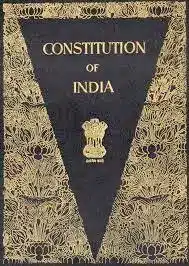
43. Who headed the Interim Cabinet formed in the year 1946?
(A) Rajendra Prasad
(B) Jawaharlal Nehru
(C) Sardar Vallabhbhai Patel
(D) Rajagopalachari
Correct Answer: (B) Jawaharlal Nehru
44. Which one of the following statements correctly describes the Fourth Schedule of the Constitution of India?
(A) It contains the scheme of the distribution of powers between the Union and the States
(B) It contains the languages listed in the Constitution
(C) It contains the provisions regarding the administration of tribal areas
(D) It allocates seats in the Council of States
Correct Answer: (D) It allocates seats in the Council of States
45. Who was the Chief Justice of India when public interest litigation (PIL) was introduced to the Indian judicial system?
(A) M. Hidayatullah
(B) A.M. Ahmadi
(C) A.S. Anand
(D) P.N. Bhagwati
Correct Answer: (D) P.N. Bhagwati
46. The number of demands in the General Budget for civil expenditures is
(A) 109
(B) 106
(C) 103
(D) 102
Correct Answer: (C) 103
47. The Budget was formally introduced in India in:
(A) 1860
(B) 1947
(C) 1950
(D) 1868
Correct Answer: (A) 1860
48. Which of the following expenditures are charged upon the Consolidated Fund of India?
1. Allowances of the Chairman of Lok Sabha.
2. Expenditure relating to the raising of loans and the service and redemption of debt.
3. Pensions of the judges of High Courts.
4. Any sum required to satisfy the award of any arbitration tribunal.
5. Administrative expenses of the office of the Comptroller and Auditor-General
(A) 2 and 5
(B) 1, 2 and 5
(C) 2, 3 and 4
(D) 1, 2, 3, 4 and 5
Correct Answer: (D) 1, 2, 3, 4 and 5
49. The word ‘Budget’ is mentioned in which of the following Articles of the Constitution of India:
(A) Art. 266
(B) Art. 112
(C) Art. 265
(D) None
Correct Answer: (D) None
50. Who characterises Indian Union as “a federation with a centralising tendency?”
(A) B.R. Ambedkar
(B) K.C. Wheare
(C) Ivor Jennings
(D) Granville Austin
Correct Answer: (C) Ivor Jennings
Also refer :
- Top 50 Science MCQs For Competitive Exams
- Top 50 MCQs on the Indian economy
- मानचित्र पर आधारित प्रमुख प्रश्न
- MCQs on the Indian Independence Movement


